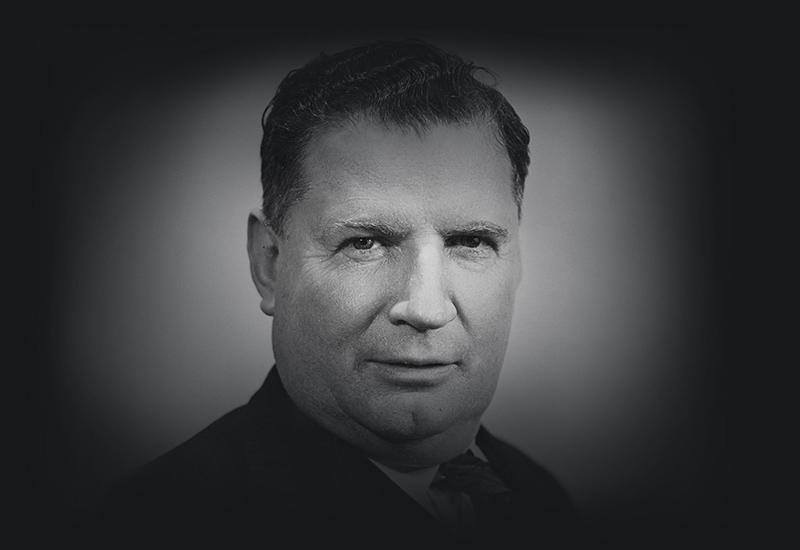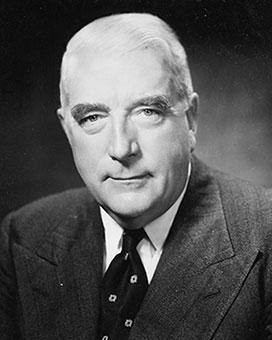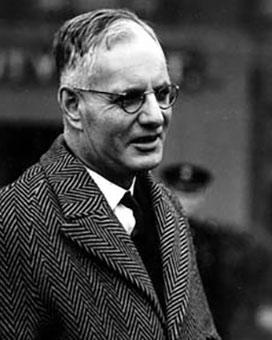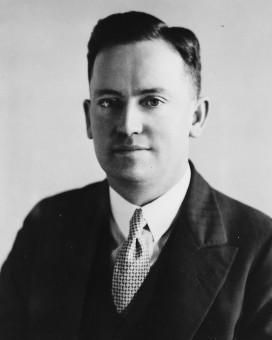On this page
After his brief term in office as Prime Minister in 1941, Arthur William (Artie) Fadden served another 17 years in parliament. He was deputy Prime Minister and Treasurer in the coalition government of Robert Menzies for 9 years from 1949 until his retirement from Cabinet in 1958.
Fadden retired from parliament in 1958 to pursue his business interests. He died at his Brisbane home on 21 April 1973, aged 78.
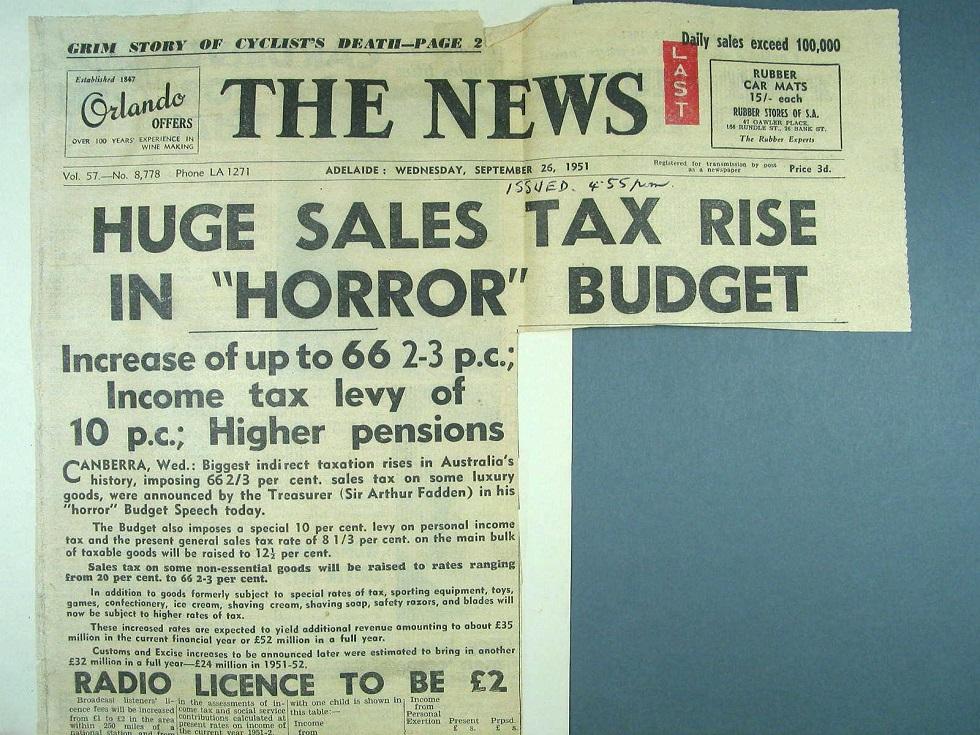
Arthur Fadden's popularity, particularly among primary producers, sank in 1951 after he brought down a strict budget to try to counter inflation and pay for Australia’s commitment in the Korean War. NAA: A571, 1951/2248, p.74
Leader of the Opposition 1941–43
After the fall of the Fadden government, Robert Menzies resigned as leader of the United Australia Party. William Hughes, then 77, won the leadership by one vote from Percy Spender. A joint United Australia Party–Country Party meeting then elected Arthur Fadden as coalition leader, to take the role of Leader of the Opposition.
William Hughes relied on joint meetings of the coalition parties, to the concern of members of his own party, particularly Robert Menzies. After Fadden opened the coalition election campaign in July 1943, Menzies told his Kooyong constituents he did not support parts of the platform. Fadden bitterly resented this ‘stab in the back’.
After the coalition parties’ disastrous election result on 21 August 1943, Fadden stood down as Leader of the Opposition on 23 September. Robert Menzies, who had replaced William Hughes as United Australia Party leader, became the new Leader of the Opposition.
Despite this stormy beginning, Arthur Fadden retained leadership of the Country Party for 17 years. After the formation of the Liberal Party in 1944, Menzies led his party for 21 years. The 2 leaders maintained a stable coalition and conducted a sound political relationship for 15 years. For nine of those years, they headed a coalition government.
Treasurer 1949–58
Following the electoral redistribution in 1949, Fadden stood for the seat of McPherson and was returned at the federal election on 10 December. The Liberal Party led by Robert Menzies won an outright majority and took government with 55 seats in the enlarged House of Representatives. The Country Party won 19 seats, and Menzies formed a coalition government. On 19 December, Fadden was sworn in to the ministry as Treasurer and deputy Prime Minister.
A meeting of Commonwealth finance ministers in London from December 1951 to January 1952 was Arthur Fadden’s first official trip overseas as Treasurer. On this visit he was awarded the Knight Commander of the Order of St Michael and St George, in the last investiture of King George VI who died the following month.
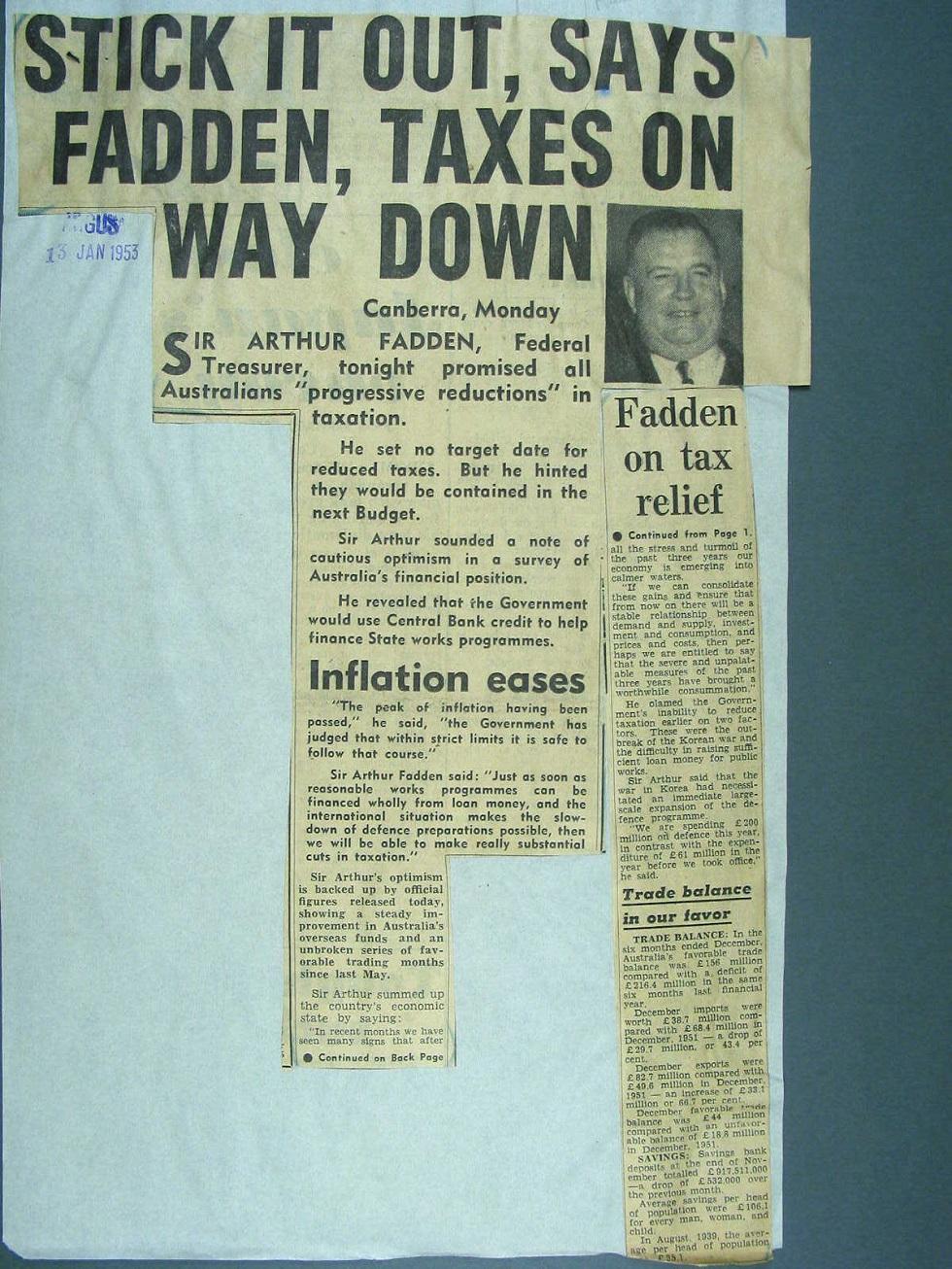
Arthur Fadden delivered a more optimistic budget in 1953. NAA: A5954, 1957/6, p.44
From September to November 1954, the Faddens visited Canada and the United States for meetings of the International Monetary Fund and the World Bank. A year later, they were in Istanbul for a meeting of the International Monetary Fund and the World Bank, and then travelled to meetings in London, Ottawa and Washington, before returning home to campaign in the December 1955 election.
Sir Roland Wilson, head of the Treasury Department was a key adviser. During Arthur Fadden’s tenure as Treasurer, the 1957 restructure of the Commonwealth Bank created the Reserve Bank of Australia as the government’s central bank. A separate Commonwealth Banking Corporation had authority over the Commonwealth Savings Bank and the Commonwealth Trading Bank. Fadden also initiated the legislation for a Commonwealth Development Bank, enacted in 1959.
On 26 March 1958, Fadden stood down as parliamentary leader of the Country Party and deputy Prime Minister and John McEwen was elected his successor as party leader. Fadden retired from parliament in December 1958 and Harold Holt took his place as Treasurer on 10 December.
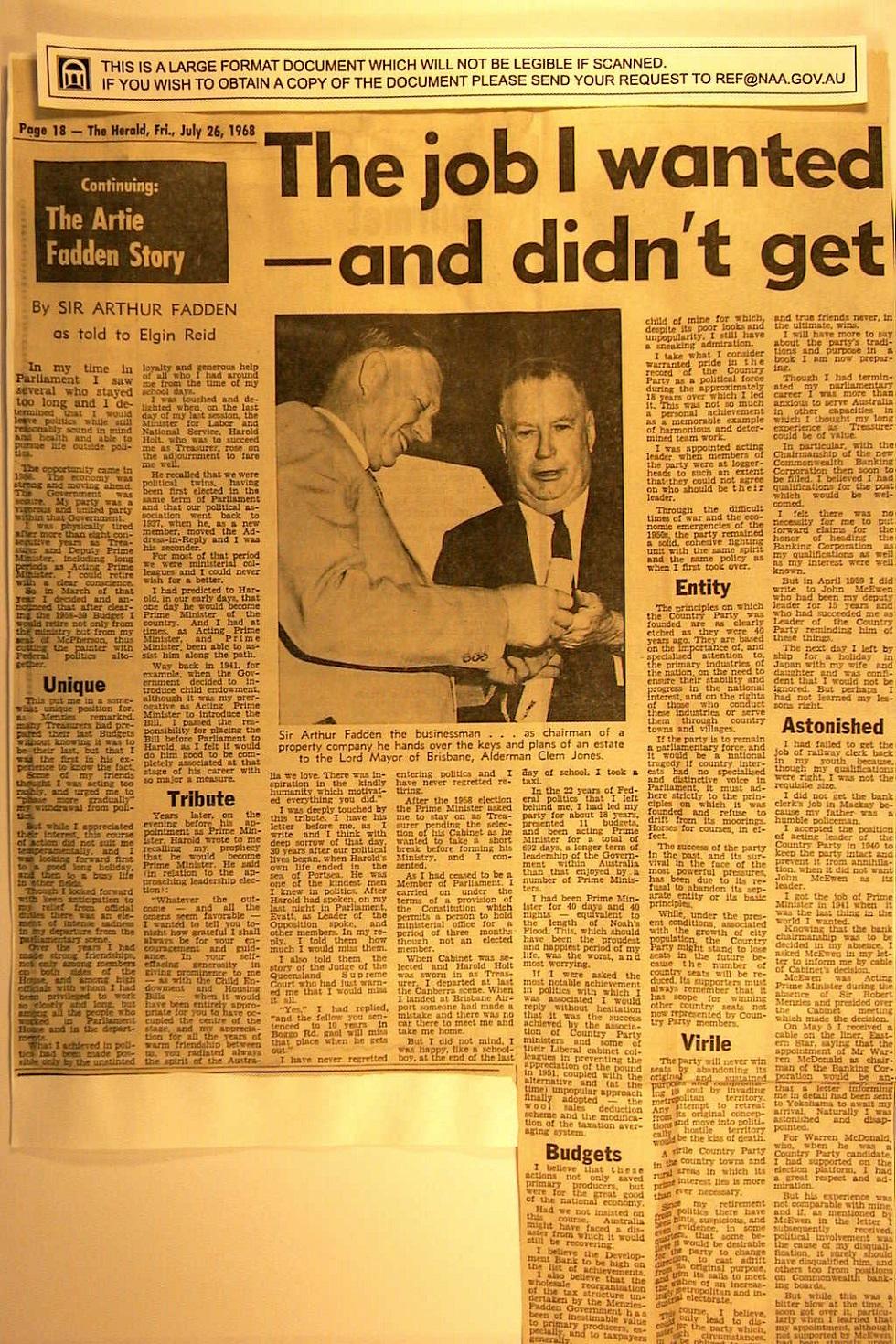
Arthur Fadden's memoirs, as told to writer Elgin Reid, were serialised in the Brisbane Herald from 13 to 16 July 1968. They were published the following year in book form as They Called Me Artie. NAA: A5954, 62/1, p.9
In retirement, Fadden managed his business affairs and remained active in party and community organisations.
Arthur Fadden died in Brisbane on 21 April 1973, a week after his 78th birthday.
Sources
- Costar, Brian and Vlahos, Peter, ‘Sir Arthur William Fadden’ in Michelle Grattan (ed.), Australia’s Prime Ministers, New Holland Press, Sydney, 2001.
- Cribb, Margaret, ‘Sir Arthur William Fadden’ in Australian Dictionary of Biography, Vol. 14.
- Souter, Gavin, Acts of Parliament, Melbourne University Press, Melbourne, 1988.
From the National Archives of Australia collection
- Budget 1940–41. Supplementary Financial Statement by Treasurer, AW Fadden, 1941. NAA: A571, 1951/2248
- Personal correspondence – Australia. Rt Hon. Sir Arthur Fadden, 1962–68. NAA: A5954, 62/1
- Press file. Political Statements by Sir Arthur Fadden, 1952–56. NAA: A5954, 1957/6
- Budget 1951–52 – Press Cuttings, 1951, NAA: A571, 1951/2248
- Visit of President of South Vietnam to Snowy Mountains Hydro-electric Authority, 1957, NAA: A11396, 133/5
- Rt Hon. Sir Arthur Fadden, Federal Treasurer – Visit abroad, August 1958, NAA: A463, 1958/2880

